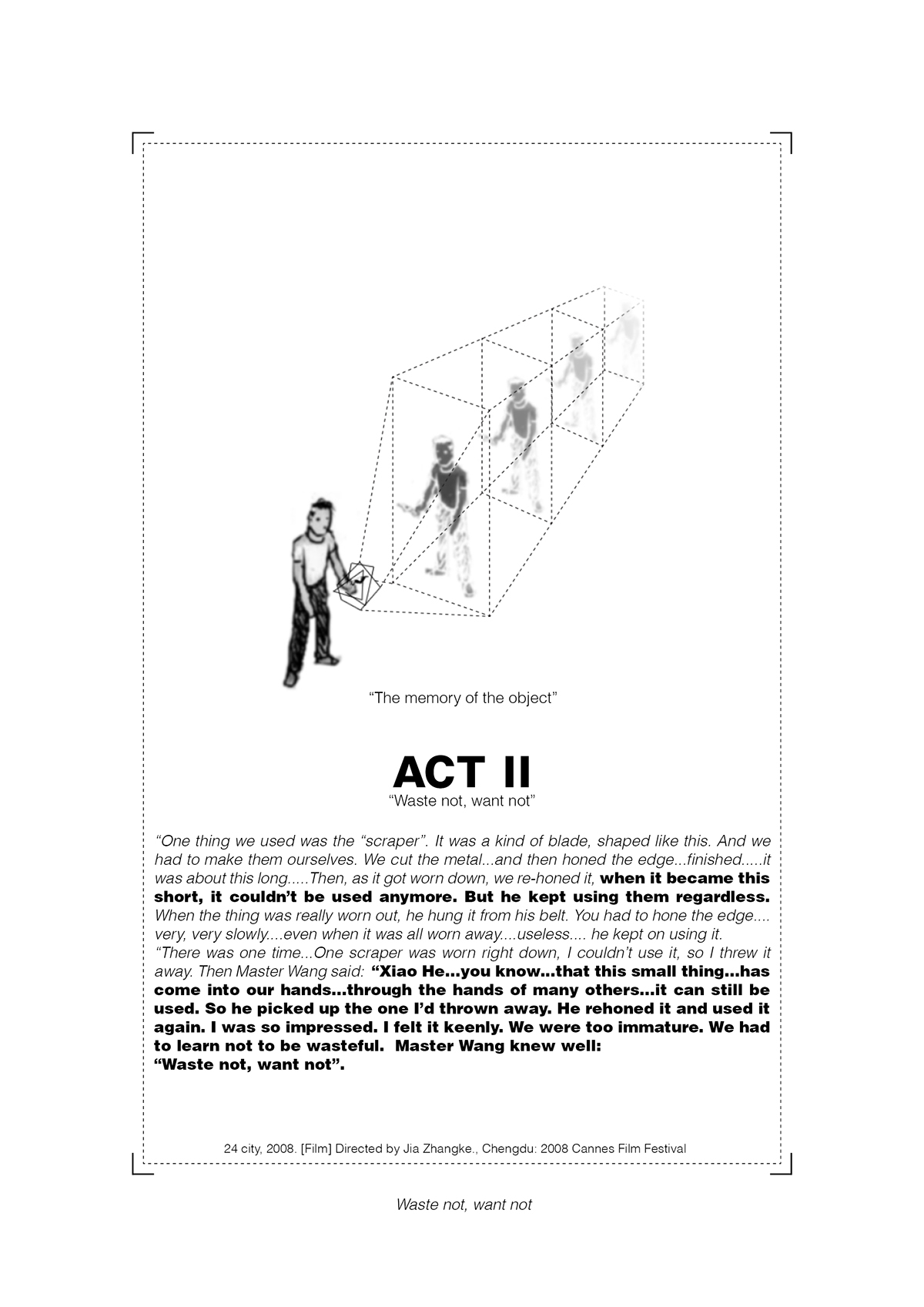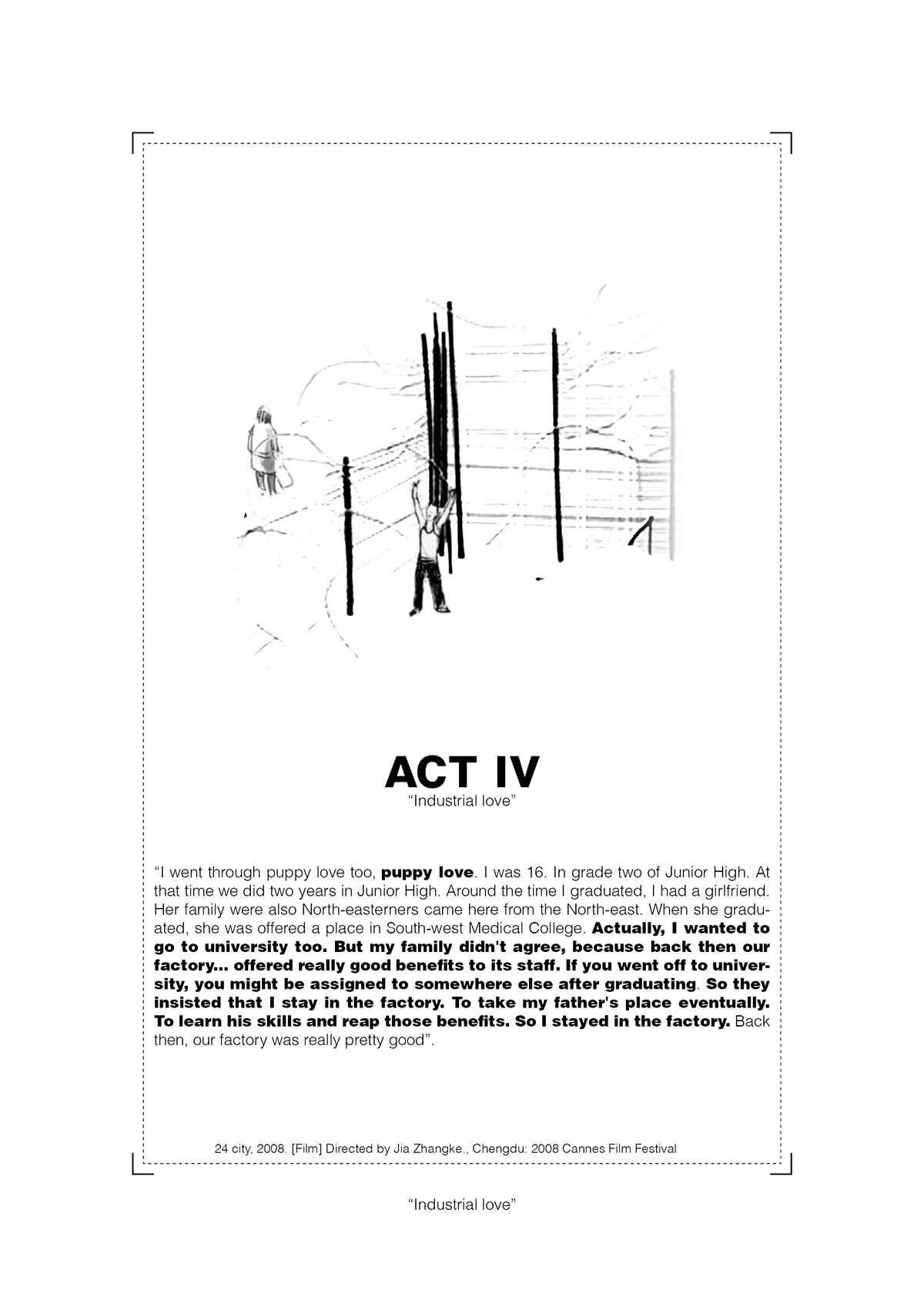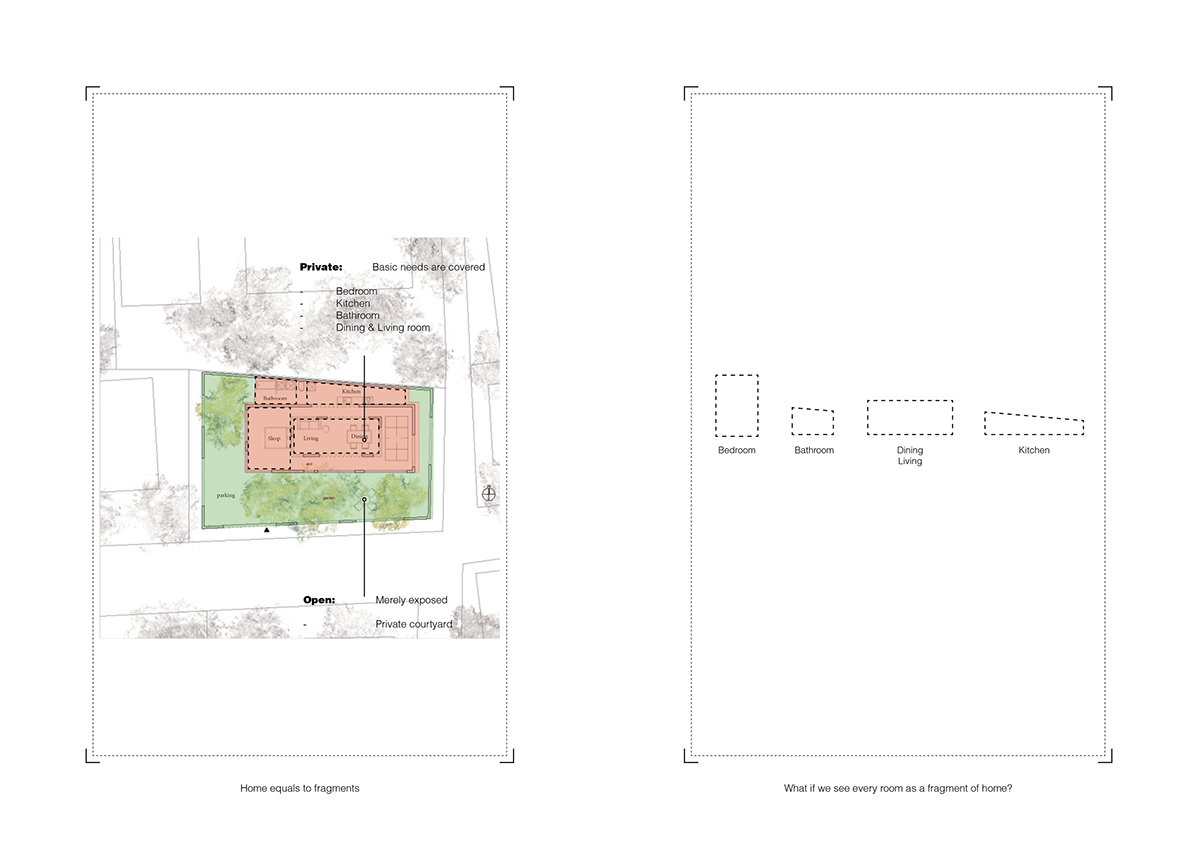
In between hills / sea and the city: Industrial welcome


The Value Factory, Shenzhen
Design Research Questions
1. Can we use human memories in order to understand industrial space?
2. Is it possible to relate the industrial site of Shekou with the notion of home?
2. Is it possible to relate the industrial site of Shekou with the notion of home?

Design Methodology - Ars Combinatoria
Ars Combinatoria works as a method of representation of relationships and construction of design tools. Out of the different relationships the findings will become layers, fragments, tools which are going to be translated into design. Now we can start with existing qualities, identifying them, highlighting them, dramatizing them and, by doing so, revive the industrial memories of the Value Factory towards new futures. A future that perhaps transforms Shenzhen into a place that gives people a reason to connect with the past and open the ‘window’ to the world.

Design in scales as a movie script
John Hedjuk
“At the 1) local and 2) micro scale – Personal notes, facts and local tales and at the 3) cosmologically enlarged scale - divine territories, cities and villages, large cycles of life and death, time and space. This approach begins as a matter of personal or animal (domestic architectural) concern; it is then drawn out personified in such a way as to enlarge it to the scale of philosophical or theological (architectural) proposition”
David Lynch
Experiencing this industrial site in person gave me the opportunity to feel the ‘nature’ of this place. Looking at it as non-place enabled me to explore the rough surfaces which dominate in the built space. They are fragments. David Lynch has said: “I just like going into strange worlds. A lot more happens when you open yourself up to the work and let your-self act and react to it. Every work ‘talks’ to you, and if you listen to it, it will take you places you never dreamed of”2.
Experiencing this industrial site in person gave me the opportunity to feel the ‘nature’ of this place. Looking at it as non-place enabled me to explore the rough surfaces which dominate in the built space. They are fragments. David Lynch has said: “I just like going into strange worlds. A lot more happens when you open yourself up to the work and let your-self act and react to it. Every work ‘talks’ to you, and if you listen to it, it will take you places you never dreamed of”2.
Industrial Memories - Values
Industrial memories
One of the main reasons which launched this design thesis has sociological nature. To understand people of the working class of China, listen to their stories. The ‘Industrial memories of an urban border’ originates from the memories of the people who worked and lived in the factory ‘420’ in Chengdu city. Different tales outline series of events which represent the lives of the people who used to work on the industrial site. Attention is given to their concerns, fears, difficulties but also to their attitudes, ideals and beliefs. The stories are presented as acts, translated into design tools and relationships with the industrial site of Shekou.
Values
Relationships between memories and highlight of existing qualities which are not seen with bare eyes.





Desing Strategy

The Industrial Home
Revive the industrial memories by finding the hidden home inside the Value Factory.
The Wall
The protector of the memories.The industrial site, enclosed from its surroundings.
The ambush
Introduce the hidden industrial qualities outside the factory. Creation of multiple entrances and extis from and to the factory
Atmospheres
Master Wang:
“Xiao He...you know...
that this small thing...
has come into our hands...
through the hands of many others...
it can still be used. So he picked up the one I’d thrown away
He rehoned it and used it again.
I was so impressed.
I felt it keenly.
We were too immature.
We had to learn not to be wasteful.
Master Wang knew well:
“Waste not, want not”.

Uncanny and its four characteristics inside the Value Factory


UABB Workshop: "This is where we felt familiar"

Comparing atmospheres_Holocaust memorial - Value Factory

Comparing atmospheres_Jewish museum - Value Factory


Value Factory:Living Eraserhead

Home: a world apart


Using the industrial vernacular intelligence as design tools

Fragments of the industrial home
Architectonic Metaphor I:The industrial home

Fragments of the industrial home
The Master Bedroom

’’what is familiar and secure is also hidden, secret and concealed from the outside’’

The bed in the deepest level of spatial hierarchy
The bathroom

The industrial courtyard


The industrial courtyard - waste not, want not`
Highlighting the vertical elements of the structure and the ‘sacred’ character of the Machine hall. Aim is to create an industrial trail. The memory of the object, the structure of the roof is removed and the ‘wasted’ materials ‘want’ to become part of the experience of the walker. The water pool is accessible, not deep so one can walk. Boundaries are creating alternative ways to walk this phenomenologically accessible place.
The dining room


The architectonic metaphor represents the object (the big table) and the kitchen. Reviving the sacrifices of the working class for their families outside the factory. The objects create an alternate use of the area which form the act of eating “together in a world apart”, the dining room.
The balcony

“To dwell means to leave trace” - Walter Benjamin
‘flaneur’ as a means to control the boundaries of the industrial home - a world apart
‘flaneur’ as a means to control the boundaries of the industrial home - a world apart
The wall

The sacred character- an intact ruin:
Redundancy of function with the monumentality of a Cathedral
Redundancy of function with the monumentality of a Cathedral

The physical border is just the protector of the ‘memories’ -
The completion of the industrial green belt around the Value Factory


The visual disconnection from the city will create a representation of the memories of the people. A world apart, the Factory disconnected from its surroundings, concealed from the outside.
The Ambush

Industry and the city

The urban fabric consisting of one main corridor going from the factory to the city.

Extension of the industrial atmospheres....

.....into the corridor / the new system

The ambush and its spatial qualities

I don’t see anything around

The Arena

Familiar

Enter the void

The three corridors

borders inside a border

This is how memories....

are translated
THE END






